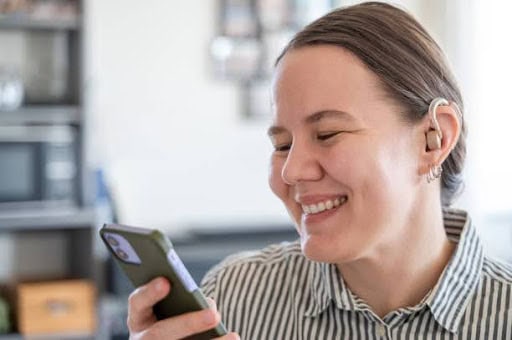Hearing loss is not the end of the world. Although it is a difficult change to deal with, it doesn’t mean a person’s life has to be on hold or that they have to stop participating in their most enjoyable activities. This is where hearing aids come in as a source of renewed auditory hope. However, this hope depends on the ability of an individual to choose the hearing aids that suit them the most.
Seeing how hearing aids come in many options, all with a variety of functions or limitations compatible with a particular lifestyle, it becomes crucial to choose carefully. On that note, here are a few things to look out for when buying hearing aids.
The Hearing Aid Styles
When it comes to choosing hearing aids, there are many factors to consider; the first is the hearing aid style. The most common styles of hearing aids are completely-in-canal (CIC) hearing aids, in-the-canal (ITC), in-the-ear (ITE), and behind-the-ear (BTE). Each of these hearing aids styles have unique features that are specific to them and their designs as well.
The behind-the-ear (BTE) hearing aids, for example, are hearing aids worn behind the ears, as the name implies. This design is larger than the others, making it much easier to handle, especially for people with dexterity issues. The in-the-ear (ITE) hearing aids are made to fit directly inside the outer ear and are not as visible as the BTE hearing aid models.
In-the-canal (ITC) and completely in-canal (CIC) are much smaller than the former designs and have a partial or complete fit into the ear canal. This makes these designs of hearing aids almost invisible and a lot more discreet.
Hearing Aids Should Match Lifestyle.
Hearing is a major part of our Lifestyle, and this Lifestyle is a major determinant when choosing hearing aids. For people with active lifestyles, such as athletes or fitness enthusiasts, the BTE model is a good option because it is resistant to moisture and durable.
For people with mundane activities like an office job or remote work, the ITC and CIC, being smaller and more discreet models, are preferred. Aside from the subtlety of the ITC and CIC, they also have excellent sound quality and features to help the wearer focus on tasks without distractions.
Considering Technology Features
The different hearing aid models come with different technological features to enhance their usability and the wearer’s listening experience. For instance, a good number of modern hearing aids are enabled with a Bluetooth connection. This allows individuals to answer calls directly with their hearing aids, listen to music, and even watch videos from their devices, especially smartphones.
Some hearing aids also have built-in noise reduction tech, which is really helpful in loud environments. This noise reduction feature minimizes background noises and makes focusing on conversations a lot easier. There are also directional microphones that allow individuals to target specific sounds, such as a person’s voice or the source of music in noisy settings.
Assessing Comfort and Fit
Comfort is key when it comes to wearing hearing aids. During a hearing health exam, measurements will be taken to ensure the hearing aid fits properly. However, it’s also important to choose a style that feels comfortable for long periods.
For those with small ear canals, smaller models like ITC and CIC may be more comfortable. In cases of arthritis or difficulty handling small objects, a BTE model might be easier to manage. Remember that hearing aids should fit snugly without causing pain or irritation.
Considering Long-Term Costs
Hearing aids are an investment in a person’s health, so it’s essential to consider the long-term costs in addition to the initial purchase price, the cost of batteries, maintenance, and potential repairs. Some hearing aids come with extended warranties or service plans, which can help reduce long-term expenses.
Rechargeable hearing aids, while often more expensive upfront, can save money over time by eliminating the need for replacement batteries. Additionally, regular maintenance, such as cleaning and checking for earwax buildup, can extend the life of the hearing aids, reducing the need for costly repairs.
Conclusion
Comfort and functionality can work together; when it comes to hearing aids, these factors should not be compromised. There is a lot to learn when trying to adjust to life with hearing aids, and it will take time. But before making any purchase, ensure that the aids are good enough for long-term use, cost-effective, and fit the user’s lifestyle.


